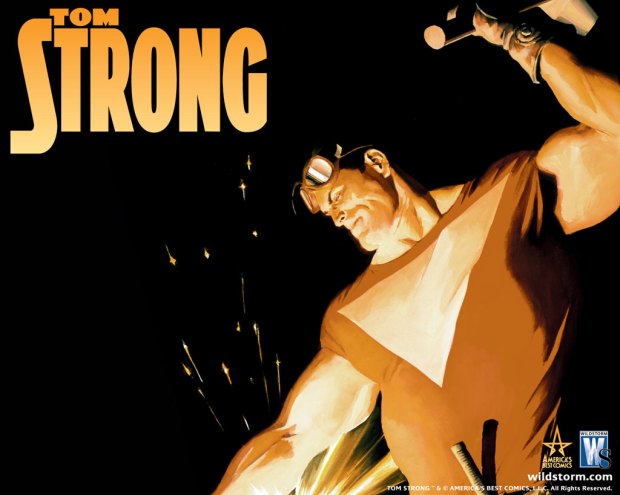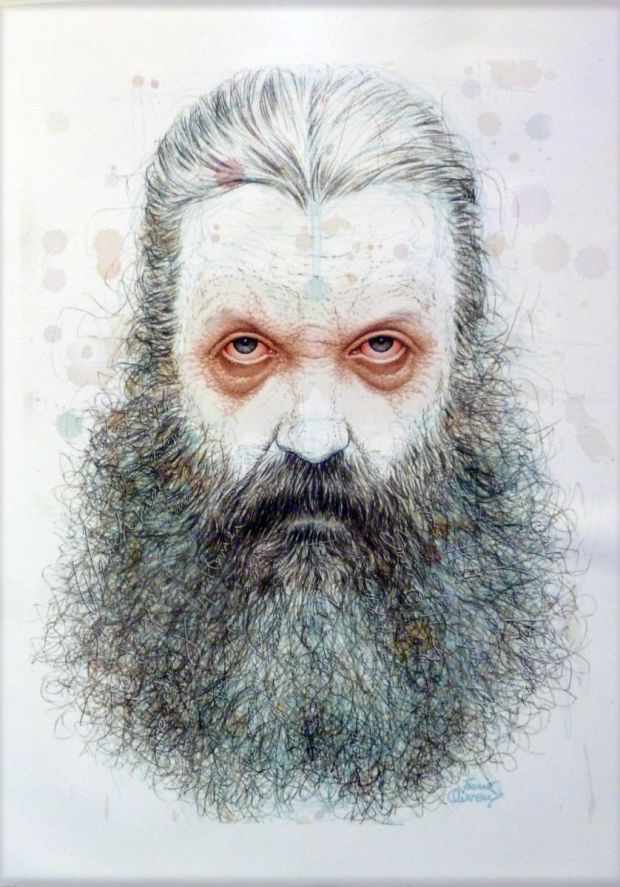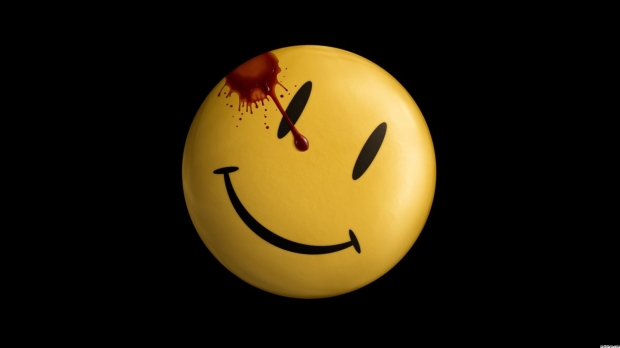The turn of the Millennium was fast approaching – something that would perk up the most sallow mind – and Alan Moore’s is nothing if not finely attuned to the ebbs and flow of the world around him, though perhaps unconcerned with the date itself. His is a mind that, when presented with a milestone in time and history he looks backward for another, using the existing build to a momentous date to gain insight into a period in history similar to one he found himself in. But who to populate this book? For a literary man there could be a myriad of choices. From those choices was formed the League of Extraordinary Gentlemen.
The story of the League sees H. Rider Haggard’s elderly and Heroin addled Allan Quartermain, H.G. Well’s malevolent and uncontrollable Invisible Man, an aggressive, xenophobic but ultimately honourable Captain Nemo of Jule’s Verne’s 20,000 Leagues Under the Sea, the puny and bestial duality of Robert Louis Stevenson’s Dr. Jekyll and Mr. Hyde brought together in the name of England by the haunted Wilhemina Murray now some years after her ordeal in Bram Stoker’s Dracula. All this at the behest of the porcine Government liaison ‘M’ (a certain Mycroft Holmes, survivor of his more famous brother). Together, drawn by the incomparable Kevin O’ Neill, the League dealt with threats as easily found in successful literature as themselves, though of course at all times unaware.
A satisfying, bounding, rambunctious rendition of old tales renewed called on almost all of Moore’s previous experience – drawing on his love of classic science fiction, withering horror, humour and unapologetic and resonant sexuality threaded seamlessly through the politics and society of the period. All presented with cartoonish glee reminiscent of Rupert Bear (who makes an appearance as a sexually aggressive experiment of Dr Moreau, who for the benefit of ease is now working out of the English Woodland) or Victorian funnies.
The first volume of the series pitted the League against Professor Moriarty from the Sherlock Holmes books; the second, against the Martians from The War of the Worlds. A third volume entitled The Black Dossier was set in the 1950s. The series was well received, and Moore was pleased that an American audience was enjoying something he considered “perversely English”, and that it was inspiring some readers to get interested in Victorian literature. Moore has always undervalued his influence. His writing has represented for a great many years a bridge across which readers of otherwise unassociated literature could cross to others.
Kim Jong Il might have declared himself Priminister of Sweden that year or Arnold Schwarzennegger a governor of California because somehow the most reknowned English comic book writer had just started a company named America’s Best Comics.
His relationship with Jim Lee had seen him agree to create an imprint within Lee’s Wildstorm company shortly before it was sold to DC. Lee and Editor Scott Dunbier flew to England specifically to reassure Moore that the sale to DC Moore had experienced before his pilgrimage into independent comics would not affect him and would not have to deal with DC directly. Moore, had already begun lining up a series of artists and writers to assist him in the venture, decided that there were too many people involved to back out now – and America’s Best Comics were born to two English creatives and a story about uniquely English characters at the height of the British Empire.
Other than League, titles such as Tom Strong, Top 10 and Promethea – all writen by Moore – covered the gamut of Moore’s interests and fascinations, supported by some of the finest artists in the business. Tom Strong, drawn by Chris Sprouse, is a post-modern superhero series, inspired by characters predating DC’s Superman was reminiscent of Moore’s work on Supreme but according to Lance Parkin was ‘more subtle’ and ABC’s most accessible comic,’ while his unnatural, drug induced longevity allowed Moore to enjoy enjoying commentary on the history of comics and pulp fiction.
Top 10, a cop procedural comedy, in a fantasy city named Neopolis in which all have super powers, costumes and secret identities was drawn by Gene Ha and Zander Cannon , spawning four spin-offs (partially written by both Cannon and Ha); including two sequel mini-series, Top 10: Beyond the Farthest Precinct, written by Paul Di Fillipo and drawn by industry legend Jerry Ordway.
Promethea allowed Moore to set the record straight, determined that his tale of a teenage girl, Sophie Bangs, who is possessed by an ancient pagan goddess, the titular Promethea, would not portray it’s central world of occultism ‘as a dark, scary place’ as that was not his experience of it. Drawn by the monumentally talented J.H.Williams, it has been described as ‘a personal statement’ from Moore, being one of his most personal works, and that it encompasses “a belief system, a personal cosmology.”
However, perhaps inevitably, despite the assurances that DC Comics would not interfere with Moore and his work, they subsequently did so, angering him. In League of Extraordinary Gentlemen #5, an authentic vintage advertisement for a “Marvel”-brand douche caused DC executive Paul Levitz to order the entire print run destroyed and reprinted with the advertisement amended to “Amaze”, to avoid friction with DC’s competitor Marvel Comics. A Cobweb story Moore wrote for Tomorrow Stories No. 8 (part of an Anthology featuring further characters Cobweb, First American, Grey Shirt,Jack B. Quick and Splash Brannigan) featuring references to L. Ron Hubbard, American occultist Jack Parsons, and the “Babalon Working”, was blocked by DC Comics due to the subject matter. Ironically, it was later revealed that they had already published a version of the same event in their Paradox Press volume The Big Book of Conspiracies.
DC had once again interfered in his work and Moore and with his runs on ABC titles coming to an end, he decided once again to step out of the industry, remarking to Bill Baker in 2005 “I love the comics medium. I pretty much detest the comics industry. Give it another 15 months, I’ll probably be pulling out of mainstream, commercial comics.”
A powerhouse and a much needed revolutionary and inspirational force was again lost to the mainstream. The League of Extraordinary Gentlemen continues still now with Century, a three part saga, of which two are now available (one of which advertised in Fallen Heroes 1 which I was proud enough to be a part of).
In January 2011, the forth and final issue of Neonomicon was released by Avatar Press. Set in the H.P. Lovecraft universe it is, as it’s predecessor and prequel The Courtyard was, drawn by Jacen Burrows.
But in 2010, true to form, and after a lifetime of bucking the system and creating his own, he formed ‘the first 21st Century’s underground magazine’ titled Dodgem Logic, utilising Northampton based artists and authors, as well as original contributions from Moore.
Future projects are The Moon and Serpent Bumper Book of Magic, written with Steve Moore and earmarked for release with Top Shelf in ‘the future.’ Otherwise, the easily recognisable cultural figure of Alan Moore can be found at numerous musical events, including a forthcoming appearance with guitarist Stephen O’ Malley confirmed for the ATP ‘I’ll Be Your Mirror’ music festival in London. Alternatively, he can be found bare chested in the Simpsons episode from 2007 ‘Husband’s and Knives’ which was aired on his 59th Birthday.
While you can apply many titles to Moore his reason for everyone being aware of him is because he is a writer. His recognisable appearance would have gained him nothing if not for the attractiveness of his words. Familiar sounds applied to unfamiliar environments, Moore’s is a voice that spits gravel but reaches the reader as blossom. Moore understood the potential of any medium to portray palpable ideas and failed to recognise the limitations artificially applied by so many other writers in the business. Where the most successful commercial writers rise and fall with the last big ‘event’ nowadays, Moore will outlast them. Moore’s writing was never based on sensationalism or the direction of a company – no matter how well intentioned. Moore’s stories are built on ideas and those last forever – no matter how they are received or sent out to the public.
Moore’s increased distancing from film adaptations of his work bely one very clear principle. His were personal projects, created with one or two others at a time. No recreation worth millions of dollars will ever compare to the thrill of reading a Moore penned panel on a Moore planned page. It was in the man, in the moment of creation that what has inspired and intoxicated so many with ideas over the years was formed. With every passing day the sentiment that placed it on the page chills, such is the immediacy and personality of a Moore script. Had it been written a day after you sense it would have been written differently, the idea formed slightly differently by an absorbed piece of prose or a remembered or realised politic. When you read a Moore panel it is the thought of a great man, crystallised and still. All you get from it is a momentary glance at the whirring cogs in the great atomic clockwork mind of Moore and even in that momentary encounter with it – there is enough wonder and intrigue to fuel 100,000 more books.
If you doubt this you only need to look at Moore’s run on the Green Lantern Corps series, short storiesdetailing a corps made up of thousands of disparate and incredible beings from a thousand different worlds. But one Green Lantern, created by Moore, doesn’t socialise. In a short story named ‘Mogo Doesn’t Socialise’, a hardened bounty hunter arrives on a partially forested planet looking for the mighty Green Lantern Mogo. In true Future Shock style, he wanders about the planet for years, determinedly hunting for his quarry, mapping the banded tree line as he goes. It’s not until his search is almost complete that he realises his mistake. The Green Lantern he is looking for is not on this planet. The Green Lantern in question is the planet. Moore is Mogo, a constant presence drifting in the dark, his influence felt among every member of his fraternity.








